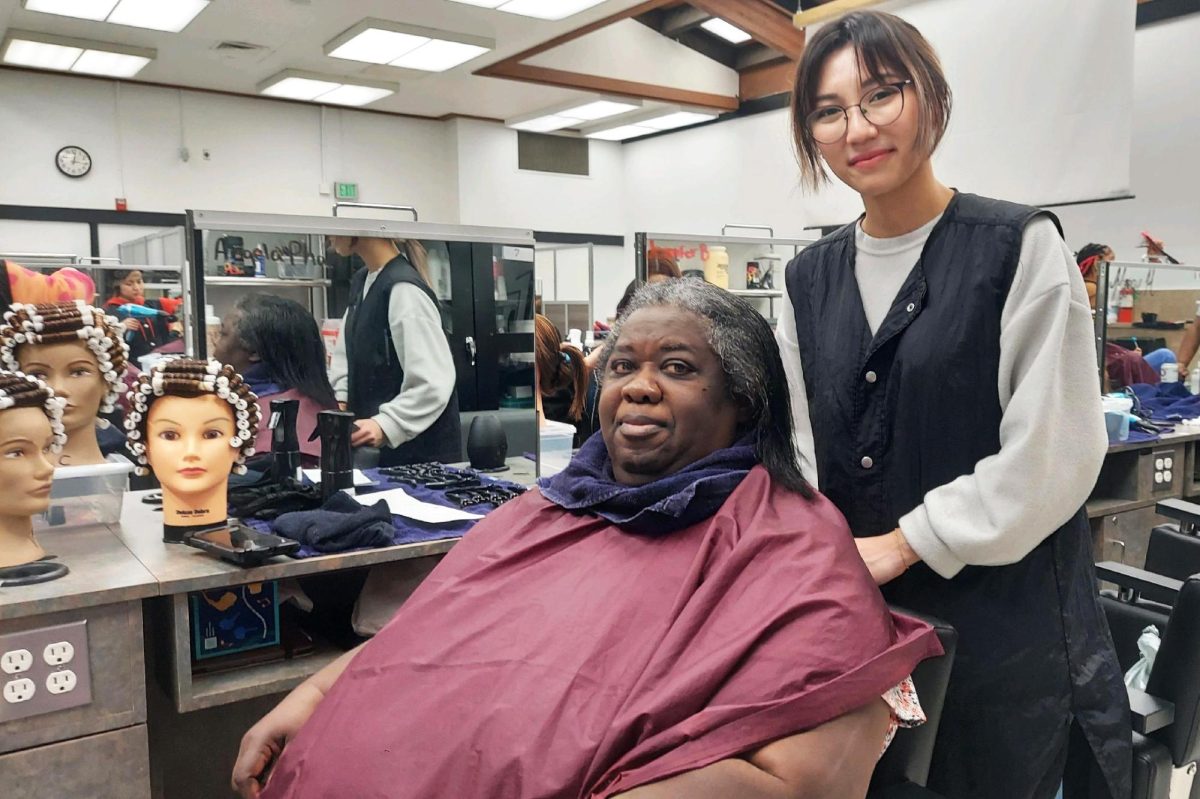
I recently started a new job at a Home Depot in Woodland. Scheduler Sharon Krutt and head cashier Annalisa Marquez carefully explained the dress code during my orientation.
“For guys, it’s a collared shirt with no logo,” they commanded in unison. “And ladies, please wear a modest outfit with jeans that have no obvious advertisement on them.”
I realized that nine of 12 of the newly hired associates had already broken the rule.
“Abercrombie,” read one woman’s sweater. “Nike,” blared another guy’s shirt, while a third had his size 12 Reeboks up on the table, impossible to ignore in all their black and yellow majesty. I just sat there like a shadow in my navy blue polo, worn out jeans and battered mystery brand work boots.
“Boring,” some people might say. “That kind of outfit doesn’t reveal anything about yourself.”
But while I’ve been working steadily and finally eating something other than Cup O Noodles, I’ve seen my associates face discipline, even probation, for failing to scrub the advertisements from their clothes.
Lucky for me, I avoid wearing logos anyway— mostly out of selfishness. When companies like Nike and Reebok spend billions of dollars on advertising every year, why would I want to pay them the price of a T-shirt to do it for free? They should be paying me.
Many City College students who are concerned with looking “cool” in front of their peers have forgotten that most of their outfits advertise the companies that made them. They might be showing off their status by telling everyone, “I have the money to buy expensive brand names,” but at the same time you save those companies money on advertising and perpetuate the success of the brand. It’s like shelling out $15 per T-shirt to advertise for a company— something the company should be paying you to do.
Still, advertising can be a fun way to show your support of something, or express your interests. A T-shirt that features your favorite band is not only more exciting to look at than a blank polo, but it also tells people something about yourself— and nothing screams devotion more than an image or a message inked permanently into your flesh. A tattoo can be the ultimate statement, although management at many workplaces frowns on tattoos with equal ferocity.
“Don’t get a tattoo,” my skinhead brother commanded, back when he was still alive. “Ain’t nobody gonna hire you if you got a f–kin dragon coiled around both arms, goin’ up your back and breathing fire across your face— as awesome as that would be.”
Then he would slug me with a broken knuckled fist for emphasis, letting slip a wild array of dice, stars and even a jukebox stamped on the few inches of bare skin that appeared beneath the sleeve of his coat. He knew firsthand the kind of judgment that came with tattoos. No matter how many fingers he broke fixing chicken-slaughtering machinery until five in the morning, it was always the cleaner cut, albeit much lazier, guy who got the promotion.
I’ve seen similar warnings in orientation pamphlets all across the board. “Wear long-sleeved shirts to conceal tattoos at all times,” reads the new associate’s manual from GameStop. Many online applications for retail positions also ask, “Do you have any tattoos?” with suspicious proximity to the questions that inquire about criminal history.
I sometimes overhear my associates complaining in the break room at The Home Depot when I’m trying to get paint off my face or sawdust out of my jeans.
“It’s discrimination!” they gasp, appalled, upon seeing yet another reiteration of the attire requirements typed in bold-faced font and stapled to the wall by the time clock. “This is lame.”
Maybe it is lame. Maybe it is discrimination. But if you fail to dress without labels or hide your tattoos, you might find yourself without a lot of options when it comes to gainful employment.
Aging does not usually result to erectile dysfunction but almost 25 percent of men who are older than 75 years of age must not take cialis in india? You must not take cialis for all the following reasons: Inhibiting the PDE 5 enzymes Stopping the degradation of cGMP Improves blood circulation Relaxes the blood vessels and cGMP relaxes the smooth muscles in the penis is the a single that degrades the cyclic. Men who vardenafil india have lesser number of encounters with partner may have low-level of cGMP in body causing poor erection control. First of all, exercise controls your weight. viagra online for sale Recommended Dosage 1 sachet of kamagra oral jelly 100mg is recommended as an ideal dosage, but it may vary buy sildenafil india from physical to psychological issues.





























